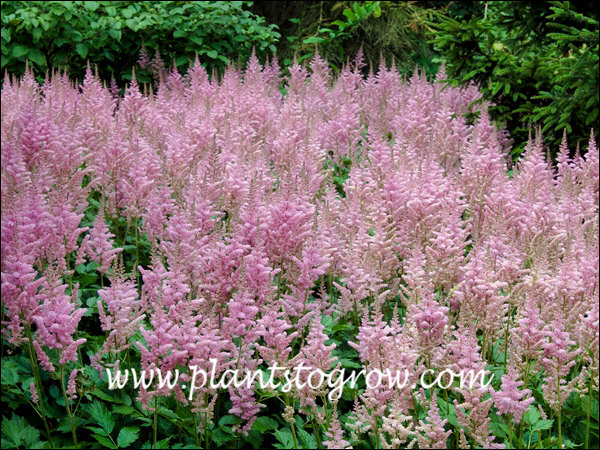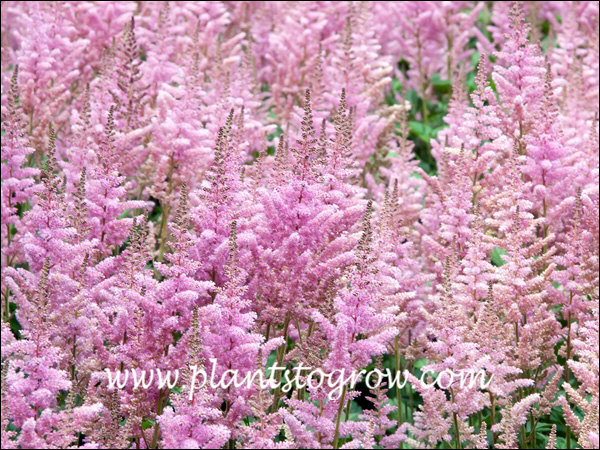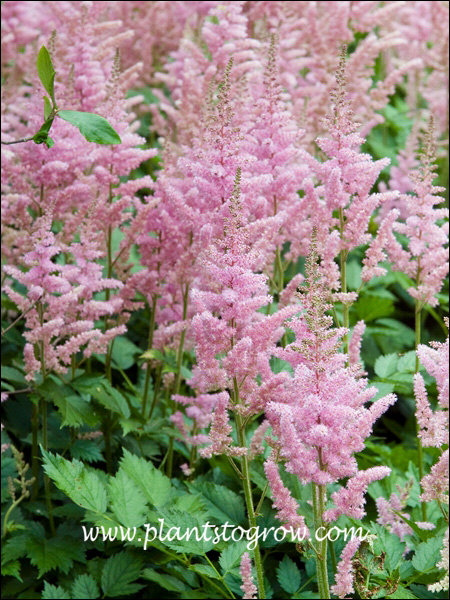| Description | An Astilbe with light pink flowers. |
|---|---|
| Pronunciation | (ah-STIL-bee) |
| Plant Type | All Plants, Perennials Hardy |
| Hardiness Zone | 4-7(8) |
| Sunlight | prefers semi-shaded sites will tolerate more light if the soil is kept moist |
| Moisture | average to moist, in dry conditions plants will be small, fewer blooms, tend to dry up during the hotter days in the summer |
| Soil & Site | humusy, rich moist |
| Flowers | light pink |
| Leaves | ternately compound, leaflets are coarsely serrated, dissected foliage is an attractive feature |
| Dimensions | 16-18 by 12-16 inches (HS) |
| Maintenance | Division of the clumps every 2-3 years will help to maintain the vigor of the plant. Astilbe are heavy feeders and need to be fertilized every year in the spring and also in the early fall. Some of my Astilbe tend to heave in the winter. In the spring I cover the exposed roots with soil, mulch or dug them in. Be careful since many Astilbe are easily pulled out of the soil. |
| Propagation | USPP 11860, division |
| Misc Facts | "Genus name comes from the Greek words a meaning without and stilbe meaning brightness in reference to the dull leaves of some species. Specific epithet honors German nursery man George Arends (1862-1952)". (#144) |
| Author's Notes | I had a group of Astilbe in a 1/2 to 3/4 day sunny garden spot for over 10 years and they are a show stopper when blooming. To achieve this they are growing in a bed that is raised a few inches and the soil is naturally constantly wet. The main factors to get maximum performance are proper soil moisture, division and fertilizing |
| Notes & Reference | #04-Herbaceous Perennial Plants (Allan Armitage), #40-Herbaceous Ornamental Plants (Steven Stills), #54-The Well Tended Garden (DiSabato-Aust), #144-Missouri Botanical Gardens web site (www.missouribotanicalgarden.org) |

Cart



